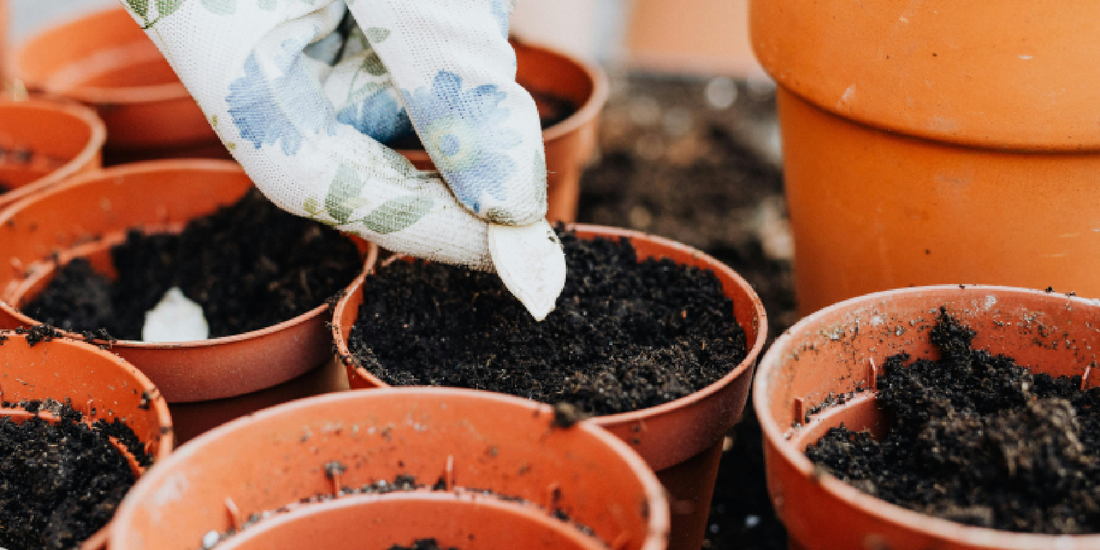
How to Choose the Best Grow Light for Your Shelf
Share
Whether you're setting up a compact indoor garden or transforming a corner into a plant oasis, one of the most important choices you'll make is your grow light. If you're using a multi-tier unit like the amoyls VerdantGlow S-Shaped Plant Shelf, selecting the right grow light is crucial for healthy, lush growth at every level.
In this guide, we’ll walk you through everything you need to know to choose the best grow light for your shelf, from light type to spectrum to safety—so you can confidently grow plants year-round.
🌿 Why Your Grow Light Choice Matters
Natural sunlight isn't always reliable—especially if you're gardening in:
- Apartments with limited window access
- Winter months with shorter days
- Cloudy, low-light environments
- Rooms with no south-facing exposure
That’s where grow lights step in. But not all grow lights are the same. The right light will:
- Support photosynthesis
- Encourage compact, strong growth
- Improve flowering and fruiting
- Prevent legginess and yellowing
💡 1. Understand Grow Light Types
There are several types of grow lights commonly used for indoor plants. Here's a quick breakdown:
|
Type |
Pros |
Cons |
|
LED Grow Lights |
Energy-efficient, long-lasting, low heat |
Slightly higher upfront cost |
|
Fluorescent (T5/T8) |
Affordable, great for seedlings |
Weaker intensity, short lifespan |
|
Incandescent |
Very cheap |
High heat, low efficiency—not recommended |
|
HID (Metal Halide/HPS) |
Extremely bright |
High heat and power consumption—overkill for shelf use |
🔍 VerdantGlow uses integrated full-spectrum LEDs—the best choice for shelf-based plant setups.
🎨 2. Choose the Right Spectrum (Color of Light)
Plants need different wavelengths of light for different growth stages:
|
Color |
Purpose |
|
Blue |
Encourages leafy, compact growth (ideal for early stages and foliage) |
|
Red |
Promotes flowering and fruiting |
|
Full-Spectrum |
Covers the entire PAR range (Photosynthetically Active Radiation), mimicking natural sunlight |
✅ Best for shelves: Full-spectrum LED grow lights. These give your plants everything they need, without switching bulbs or adjusting color manually.
🔦 3. Match Light Intensity to Plant Needs
The intensity (brightness) of your grow light should match the type of plant and its distance from the light source.
|
Plant Type |
Ideal Light Intensity |
|
Low-light plants (e.g. pothos, ZZ) |
100–200 µmol/m²/s |
|
Medium-light (e.g. herbs, ferns) |
200–400 µmol/m²/s |
|
High-light (e.g. succulents, tomatoes) |
400–600 µmol/m²/s |
📏 On shelves, choose LED grow lights designed for short-distance efficiency. Shelf lights don't need to flood a big space—they just need to target each tier effectively.
📐 4. Consider Your Shelf Layout and Space
When choosing a grow light, consider:
- Number of shelves/tiers
- Height between shelves
- Shelf width and depth
- Plant sizes
If you're using a system like amoyls VerdantGlow, it already has:
- Built-in full-spectrum LED lights per tier
- S-shaped vertical design for better light dispersion
- Optimized spacing for herbs, succulents, and foliage
🛠️ Pro tip: Place higher-light plants (like succulents) on the upper tiers and low-light ones (like ferns or snake plants) on the lower tiers.
🔌 5. Ease of Installation and Control
When choosing your light, consider these features:
- ✅ Plug-and-play setup
- ✅ Timer compatibility (set light duration automatically)
- ✅ Low heat output (especially important for close-range shelves)
- ✅ Long lifespan (LEDs typically last 25,000–50,000 hours)
- ✅ Dimmable settings or smart plug integration
🔌 VerdantGlow Shelf lights are designed for beginner-friendly operation and work with all standard smart plug timers.
🔥 6. Heat Output: Safety First
Close-range grow lights (like those on shelves) must run cool. Excess heat:
- Damages leaves
- Dries out soil too fast
- Increases fire risk in small spaces
LEDs are best for shelf growing because they emit minimal heat and can safely sit just 6–12 inches above your plants.
🪴 7. Choose Based on Your Plants
Here’s a quick guide by plant type:
|
Plant Type |
Recommended Grow Light |
|
Herbs (basil, parsley) |
Full-spectrum LED, 12–16 hrs/day |
|
Succulents & cacti |
High-intensity LED, 12–14 hrs/day |
|
Tropical houseplants |
Medium-intensity LED, 10–12 hrs/day |
|
Leafy greens (lettuce, spinach) |
Full-spectrum, 12–16 hrs/day |
|
Flowering houseplants |
Full-spectrum with red-boost, 12–14 hrs/day |
🧪 Not sure? Start with 12 hours/day and adjust based on your plants’ response.
💰 8. Cost vs. Quality: What to Expect
|
Budget Range |
What You Get |
|
$10–$30 |
Small clip-on or desktop LEDs, limited coverage |
|
$40–$80 |
Shelf-friendly bar lights or panel LEDs |
|
$100+ |
High-end multi-bar setups or full shelving units with integrated lighting |
amoyls VerdantGlow offers a value-packed shelf + grow light combo, eliminating the need to buy lights separately.
✅ Final Checklist: What to Look for in a Shelf Grow Light
- ☑️ Full-spectrum LED
- ☑️ Low heat output
- ☑️ Size matches your shelf
- ☑️ Adjustable height or multi-tier design
- ☑️ Works with timers or smart plugs
- ☑️ Energy-efficient and long lifespan
🌼 Final Thoughts
Choosing the right grow light for your shelf isn’t complicated—but it’s crucial. A well-matched light:
- Saves energy
- Keeps your plants healthy
- Makes your indoor garden effortless
The amoyls VerdantGlow S-Shaped Shelf solves the grow light equation for you, with integrated full-spectrum LEDs, elegant design, and optimal tier spacing.
Ready to grow smarter?
👉 Explore VerdantGlow now and bring sunlight indoors—one shelf at a time.
